Qiyi City Forest Garden. Debunking the myth of the failure of the green skyscraper project - Chengdu
Read this post on TravelFeed.io for the best experience
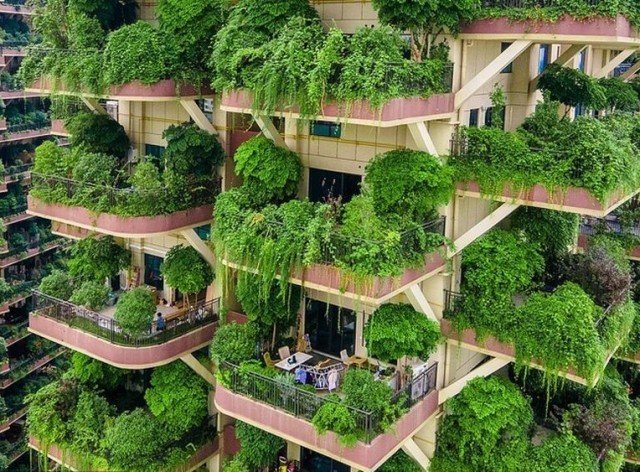
Having stumbled upon a photograph of this wonderful residential green residential complex, I decided to read in more detail what kind of complex it is, what kind of plants it is, where this beauty was built, and how everything looks inside.
The headlines on this topic made me laugh, they were written by those who do not know the reality of Chinese construction, do not understand how buildings are being built in China, and how people live in built houses.
But what are the headlines, eh?
Who will tell me later that this is not clickbait and not to attract attention?
...A new residential complex in China is overgrown with greenery and occupied by mosquitoes...
...The tenants refused to live in the Chinese housing project...
...A residential complex in China has turned into a jungle...
...The project of a "green" residential complex in Chengdu failed...
...In China, the project of a complex with a "vertical forest" failed. Only 10 families moved into it, and the forest turned into a jungle...
Something reminded me of "Killer Tomatoes" and the like.... :)))
Moreover, as always, someone wrote a short note with loud useless phrases taken from his own head, while others picked up. It happens often. Amateurs write, well, and readers pick up in the comments, simply rejoicing that some project has failed somewhere, someone has gone bankrupt, something is overgrown and mosquitoes have multiplied somewhere. :)))
Someone else decided to diversify, and added a fashionable trend that "... the coronavirus pandemic has made its own adjustments..."
Well, that is, since everything is overgrown, it means that the pandemic has made adjustments, it is logical.
We are talking about this wonderful complex.
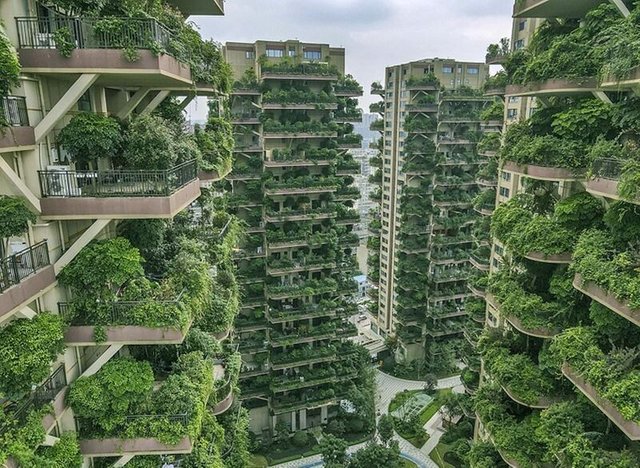
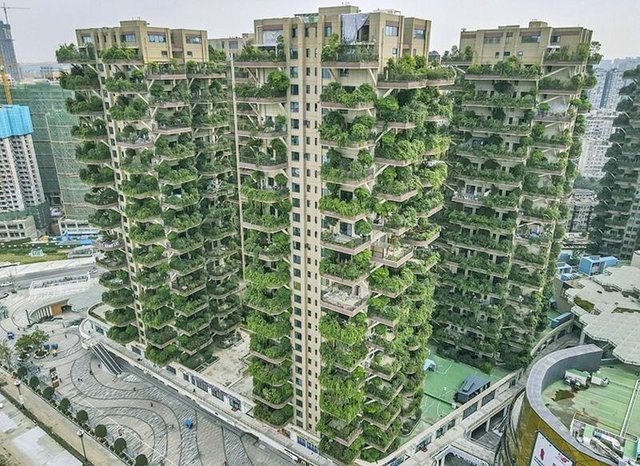
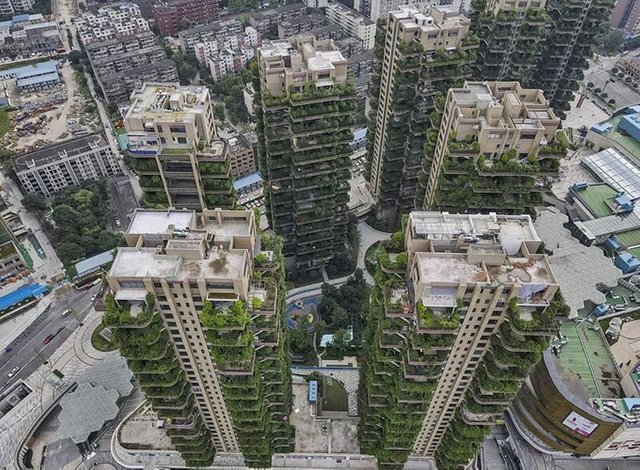
Let's take a look at the nonsense that is repeated on the Internet.
I must say right away that I am neither a specialist nor a professional, I just live in China for 11 years and see construction sites everywhere every day, I know how they sell, how apartments are bought, how greenery sits down during construction, how then the Chinese live or do not live in purchased apartments.
And such green jungles are very popular, they are on the roofs of many built gardens, or, like a green garden, in a circle of houses on different floors, for example, on 2 floors, or on the 8th floor, or on the 15th floor...
That is, green spaces and gardens are very common in the construction of skyscrapers.
That is, I will analyze what you may come across on the Internet about the "failure" of this "project".
They write: "The Qiyi City Forest Garden pilot project in Chengdu, China, promised future residents a life in a" vertical forest "with manicured gardens on every balcony."
Let's start with the fact that this is the most common garden (this is how they call residential complexes in China). With the most common balconies. Not big, and not small, absolutely standard. These houses differ only in that the same plants were planted in advance on each balcony, which, with the same growth and care, from the side, will create the appearance of absolutely green houses.They write: "...on special balconies...".
There is nothing special about these balconies, except for the place for plants, and the fact that the plants were planted in advance throughout the house, on each balcony. If you take it as a standard, many Chinese people have such green balconies, Chinese women are very fond of trees on the balcony and a huge number of flowers, so a lot of greenery on the balconies is absolutely normal.
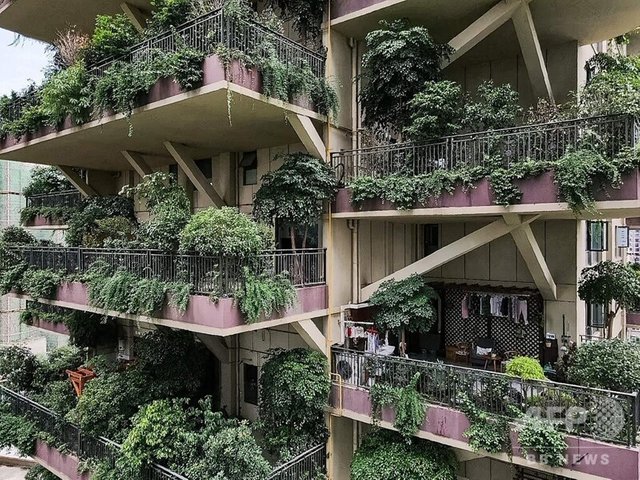
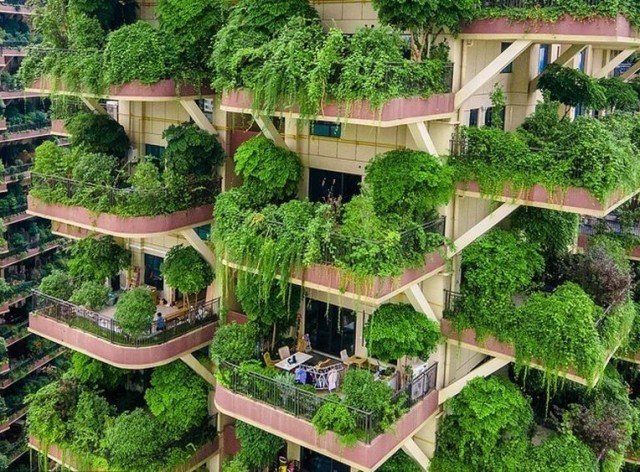
For example, in our first apartment there was a pond on the balcony, when we drove into it, we poured water into the pond and launched Chinese carps, which have lived there safely for 2 years, and, leaving the apartment, we released them into the lake next to the house.
- They write: "By April 2020, the developer assured that all 826 apartments in the complex were sold, and only 10 families were settled."
And here you need more details.
Why did someone think the developer was cheating? For example, I believe that every single apartment in this bastard was sold a long time ago, and, most likely, not in April 2020, but earlier, when not even a single excavator touched the ground.
Because in China ALL apartments are sold BEFORE the start of any construction work, so to speak, "on the vine."
Before the start of construction, sales offices appear, where they will show you the project, tell you what will happen and how, show brochures, show the apartments inside, and prices. You can buy an apartment in a building that will begin construction.
If they fenced off the land and started digging a foundation pit, usually all apartments have been sold there.
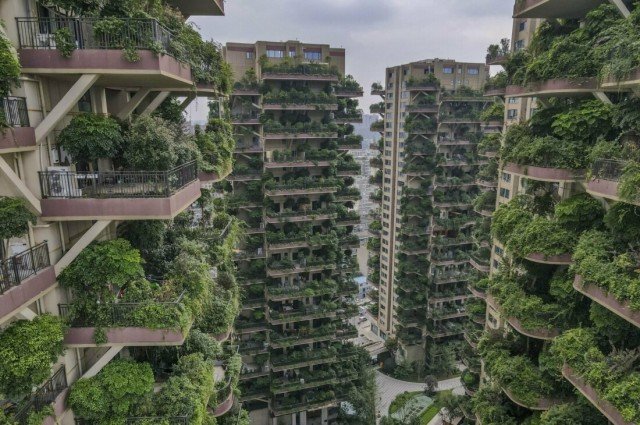
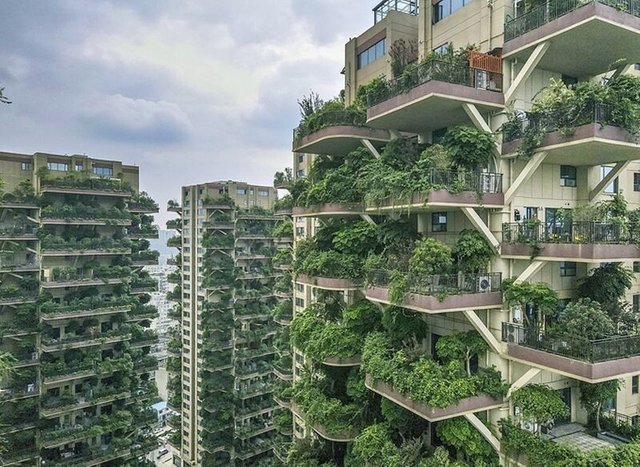
They write: "Only 10 families have moved into the house."
No problem with that in China. The Chinese buy apartments for investment and do not move into them.
In the previous apartment we lived on the floor alone, there were 6 apartments on the floor.
In the last, current apartment, we live on one floor, there are 4 apartments. Opposite us, neighbors sometimes come on holidays.
There are trash bins, there is cleaning inside the house, the elevators are working, there is water, there is electricity, there is gas, what are the problems from the fact that there are no neighbors?
Because of the small number of people in our gaden, there is only one drawback: the pool in the yard is not flooded. But this is also because the sea is nearby, 300 meters away, and the nearest beach is 1.5 km away.
The pool, if you fill it up, needs care, and you need a person who will sit near the pool all day, watch the swimmers, and the person needs to pay a salary for this.
Therefore, there are not many tenants - there is no flooded pool.
But there is a pool! There will be tenants - the pool will be flooded.
This is what you need to understand.And, for those who write about "...jungle and mosquitoes..." and about "...the project failed...".
Growing plants of this magnitude takes time, sometimes years.
And to put them in order, to trim and pollinate them from insects is a matter of several days.
And, believe me, in China this is done by the green planting service instantly: dozens of people are brought in, they all have equipment, they all cut together, equalize, loosen, remove dried leaves, wash, pollinate - and you see a clean, trimmed, well-groomed green vile, pleasing to the eye.
Check in and live.
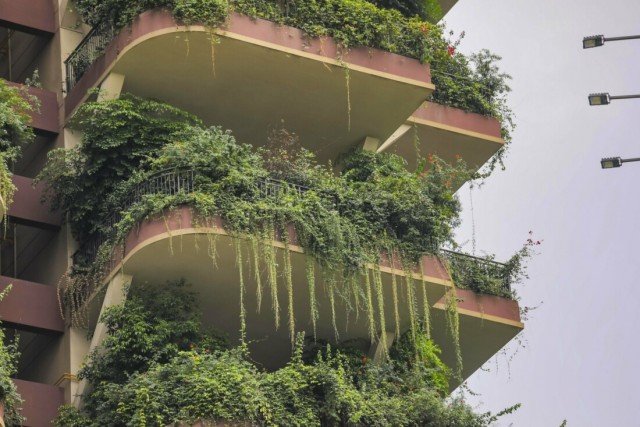
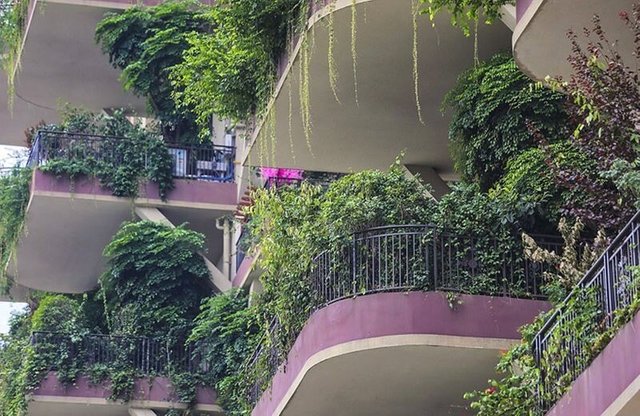
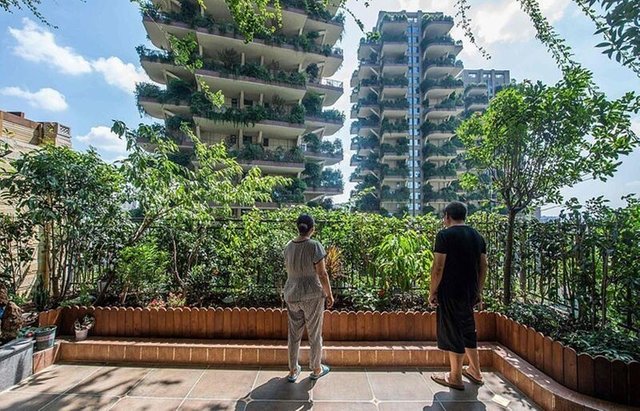
So where is the failed project? 😉
For those who have read to the end, I will say a few more words on my own behalf.
I would definitely not live in one of these apartments, because I know that it will be dark in the apartment, there will be no sun, it will be gloomy, which means mold will appear. Having the experience of living in the South of China already from 5 apartments, we choose only sunny, bright ones.
We had one dark one, I wrote about it, but there was no option, 2nd floor, windows to the courtyard of this jungle, an apartment of 2 floors, 150 squares, but at a great price. Therefore, we then chose it, lived in it for 2 years, next to the sea, it was dark all the time, and there is a lot of mold in the spring, when the mold, after the cold weather, when the concrete house warms up, begins to grow rapidly. All the following apartments are bright and sunny again.
Hi, we love your posts and that is a very interesting insight! But could you please add sources for any images that are not your own/use copyright-free images? That is to avoid takedown requests for image copyright infringement
Congratulations @lannabeiker! You received the biggest smile and some love from TravelFeed! Keep up the amazing blog. 😍 Your post was also chosen as top pick of the day and is now featured on the TravelFeed.io front page.
Thanks for using TravelFeed!
@jpphotography (TravelFeed team)
PS: You can now search for your travels on-the-go with our Android App. Download it on Google Play
Wow I don't know if I am scared or enthusiastic, the jungle apartment look awesome but when I read about mosquitos I feel scared. By the way are really charming to see.